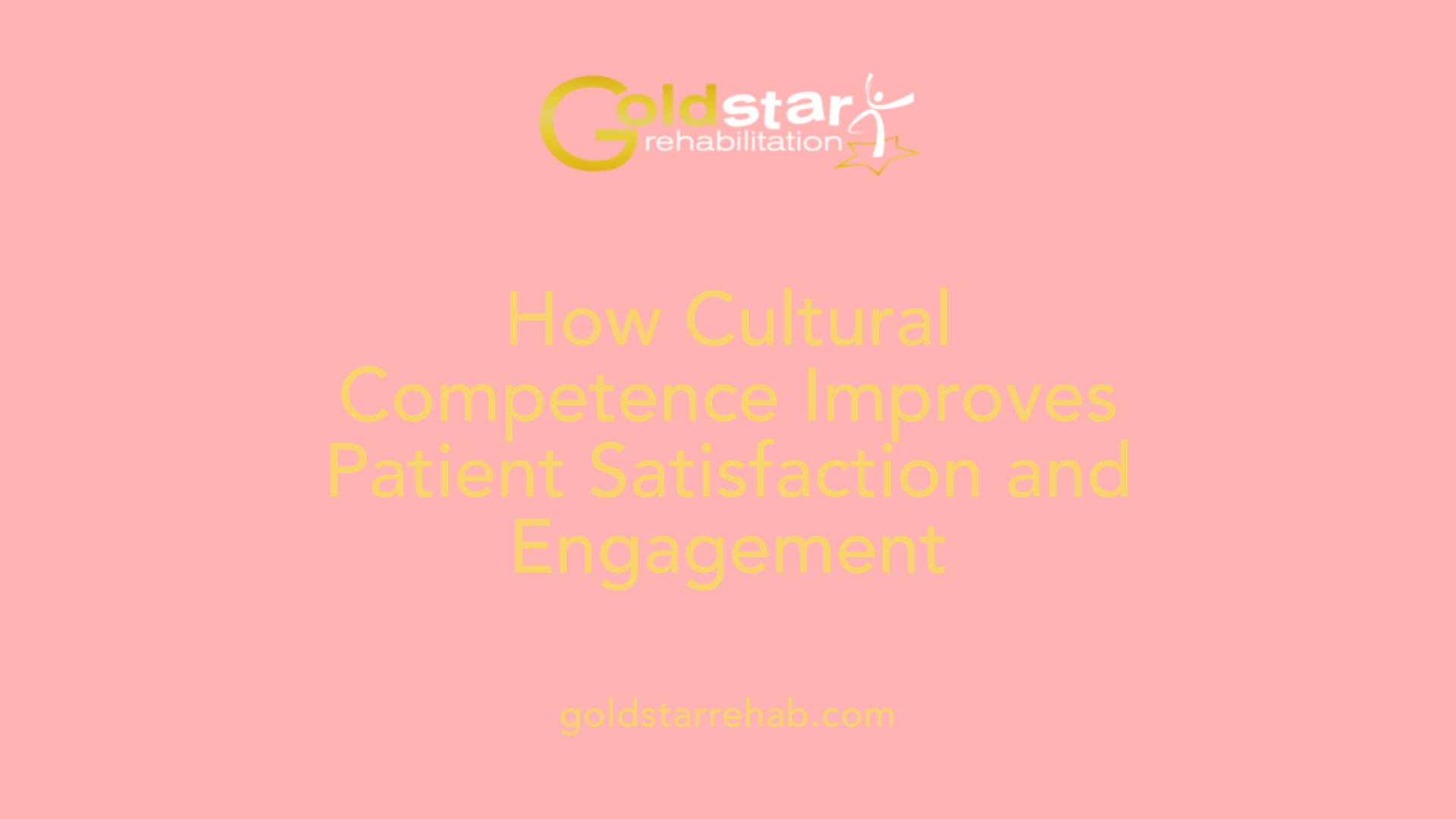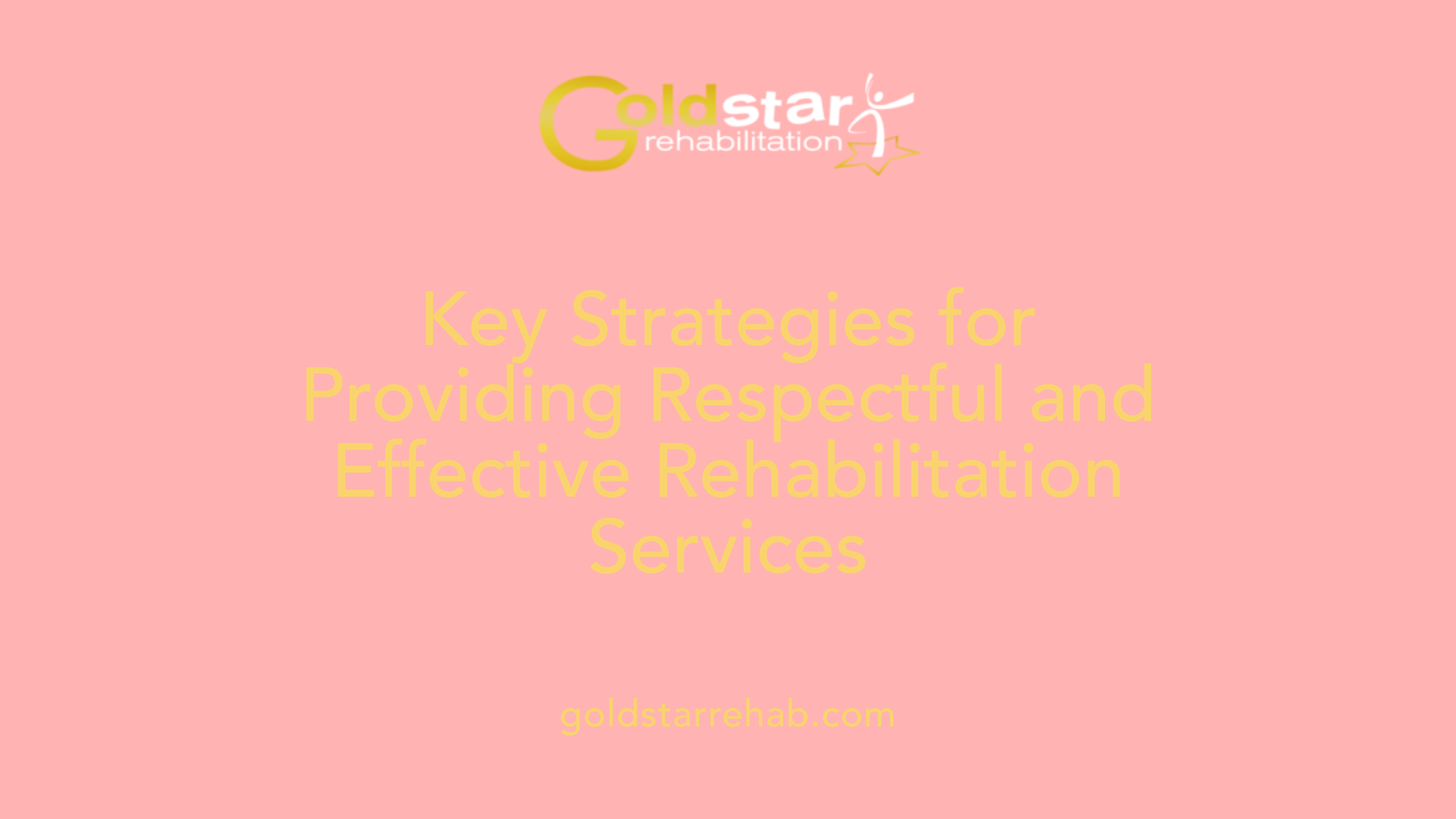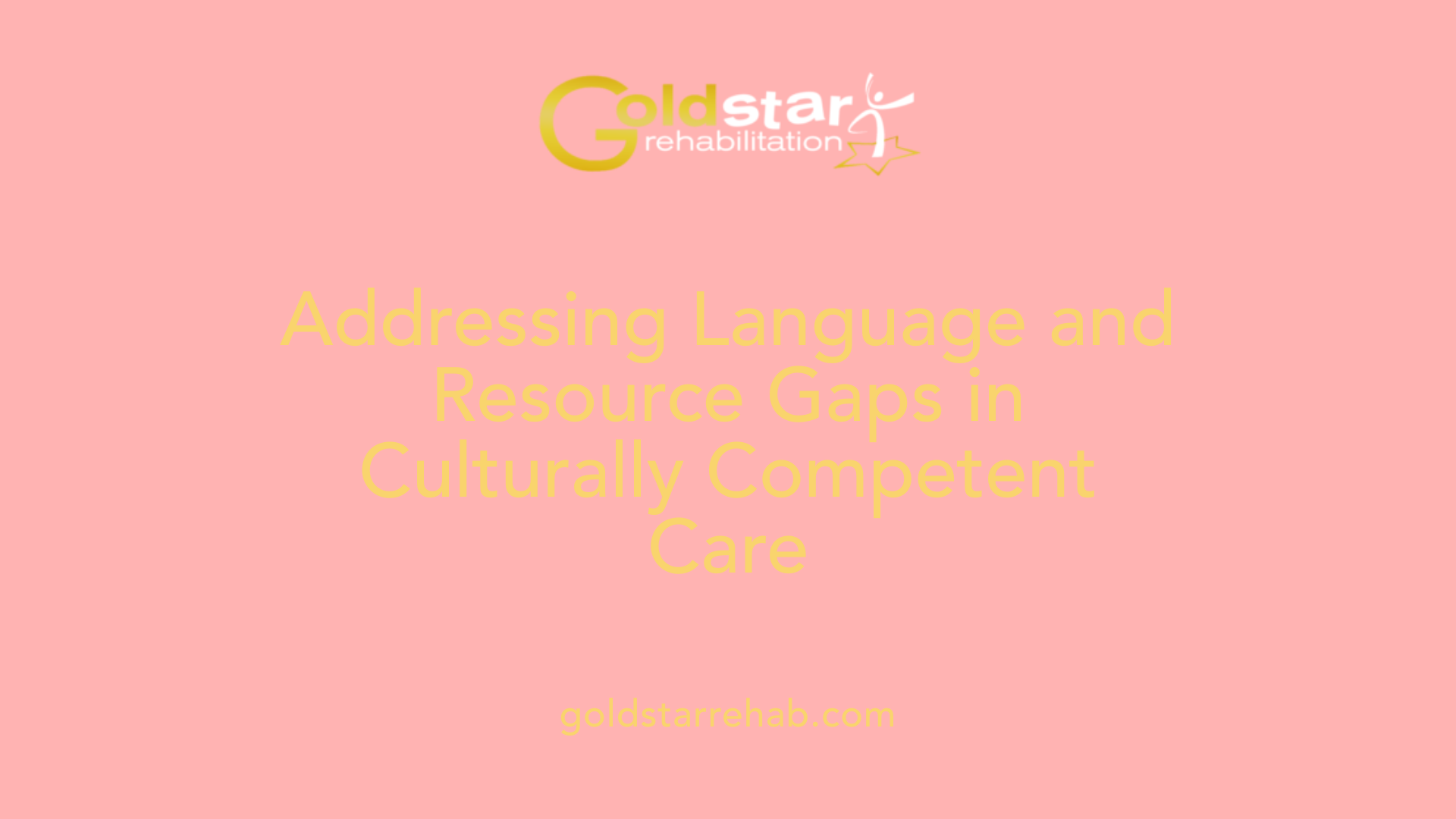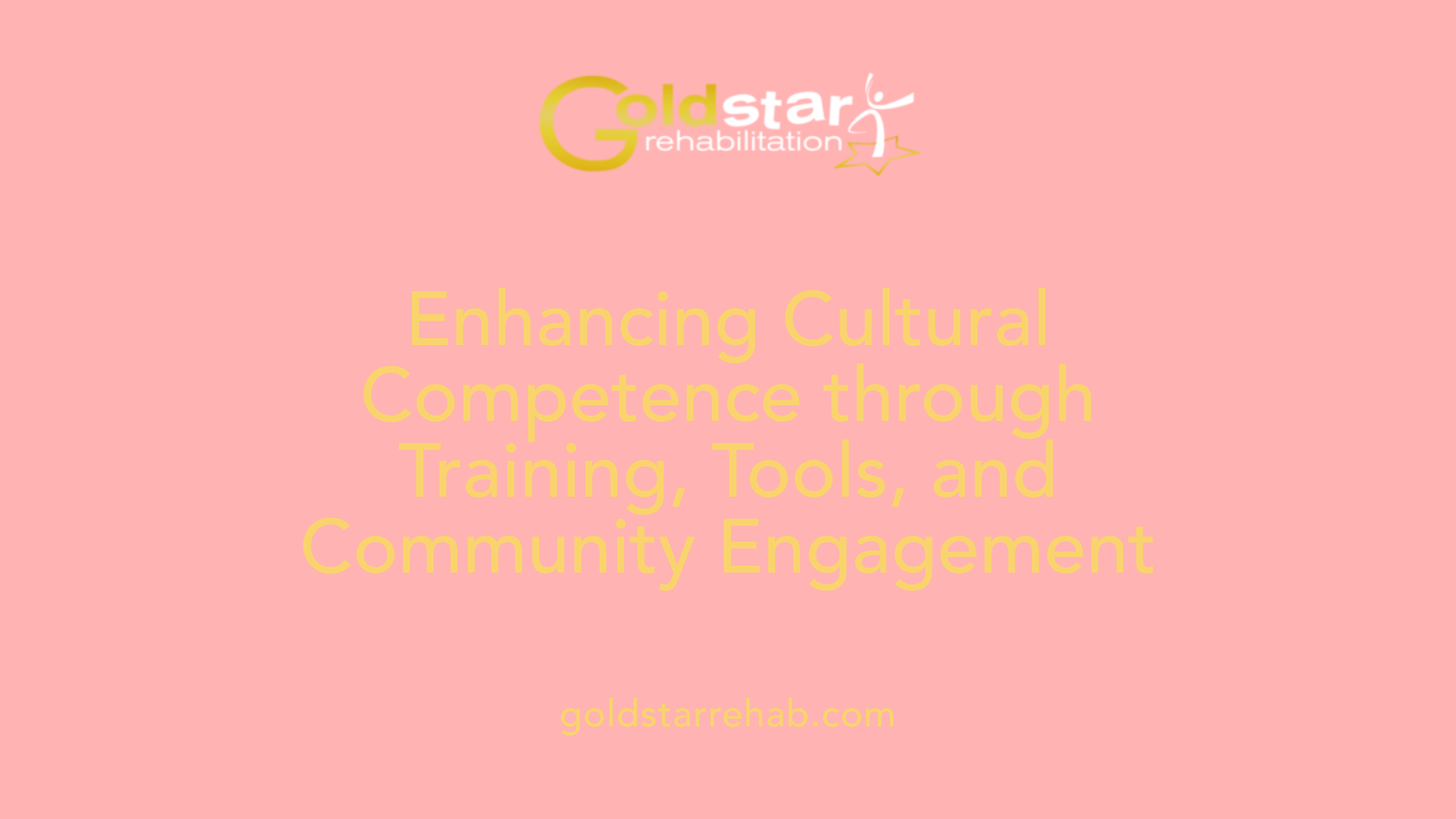The importance of culturally sensitive care in rehabilitation services
Enhancing Rehabilitation Outcomes through Cultural Awareness
Table of Contents
Understanding the Necessity of Cultural Sensitivity in Rehabilitation
In an increasingly diverse society, delivering culturally sensitive care in rehabilitation services is crucial for ensuring equitable health outcomes. This article explores the significance of cultural competence and humility, examines barriers and strategies for implementation, and highlights the benefits of integrating cultural considerations into rehabilitation practices.
The Significance of Cultural Sensitivity in Rehabilitation

What is the importance of cultural sensitivity in rehabilitation healthcare?
Cultural sensitivity plays a crucial role in rehabilitation because it helps healthcare providers understand and respect the diverse cultural backgrounds, beliefs, and health practices of their patients. This understanding fosters more effective communication and allows for personalized care tailored to each patient’s cultural context.
When practitioners recognize cultural differences, they can address common health disparities caused by socioeconomic inequality, language difficulties, and cultural beliefs about health and disability. For example, patients from minority or culturally and linguistically diverse (CALD) communities often experience higher levels of pain, disability, and psychological distress, yet they may receive subpar care if their cultural needs are not acknowledged.
Incorporating cultural competence—which involves ongoing education, self-awareness, and reflective practice—helps reduce misdiagnosis, biases, and barriers like language obstacles. For instance, hiring bilingual practitioners, utilizing interpreters, and developing culturally appropriate materials enable clients to better understand their treatment options and adhere to rehabilitation plans.
Fostering cultural sensitivity encourages trust and strengthens therapeutic relationships. Patients who feel understood and respected are more likely to engage actively in their rehabilitation, leading to better treatment adherence and improved health outcomes.
Ultimately, emphasizing cultural sensitivity enhances the overall quality and equity of healthcare services. It helps bridge gaps in access and delivery for marginalized populations, contributing to the reduction of health disparities and the achievement of better, more equitable rehabilitation outcomes for all individuals.
The Impact of Cultural Competence on Patient Outcomes

How does cultural competence affect patient outcomes and treatment effectiveness?
Cultural competence enhances patient outcomes and the effectiveness of medical treatments by improving communication, fostering trust, and respecting cultural differences. When healthcare providers understand and acknowledge diverse cultural backgrounds, they can tailor their approaches to meet individual patient needs effectively.
This approach leads to better engagement and cooperation from patients, particularly those from minority or marginalized groups. Patients are more likely to adhere to treatment plans, participate actively in their care, and feel respected and understood.
Research shows that culturally competent care can improve patient satisfaction significantly. When patients feel their cultural beliefs and preferences are valued, they are more motivated to follow through with therapies and lifestyle changes.
However, the evidence linking cultural competence directly to better measurable health outcomes like reduced morbidity or mortality is mixed. While many studies report improvements in perceptions of care, adherence, and communication, consistent evidence of direct improvements in clinical health metrics is less established.
Despite this, the importance of cultural competence in reducing disparities and promoting health equity remains clear. It helps address systemic barriers, including language difficulties and cultural misunderstandings, which often hinder effective treatment.
Ultimately, integrating cultural awareness and responsive practices into healthcare settings ensures higher quality, equitable, and patient-centered care, leading to better overall health outcomes.
Strategies for Delivering Culturally Sensitive Rehabilitation Care

What strategies can healthcare providers use to deliver culturally sensitive rehabilitation care?
Delivering culturally sensitive rehabilitation requires a multifaceted approach that prioritizes ongoing education and self-awareness among healthcare professionals. Continuous cultural competence training helps providers stay updated on diverse cultural practices, beliefs, and communication styles. This ongoing learning fosters a deeper understanding of patients’ backgrounds, enabling more personalized and respectful care.
Using cultural assessment tools, such as the Cultural Formulation Interview, allows practitioners to systematically explore individual cultural identities, health beliefs, and treatment preferences. Such tools inform tailored interventions and help practitioners consider cultural influences on health behaviors and goals.
Incorporating culturally relevant interventions, including traditional healing practices or local customs, can improve patient engagement and treatment adherence. Tailoring treatment plans to align with patients’ cultural values increases the likelihood of positive outcomes.
Effective communication is vital. This involves utilizing language support services, such as professional interpreters and multilingual resources, to overcome language barriers that could hinder understanding and trust. Clear, respectful dialogue ensures patients comprehend their treatment and are active participants in their rehabilitation.
Involving families and leveraging community resources strengthens support networks and fosters a sense of trust and shared responsibility. Engaging community leaders and cultural organizations can also facilitate outreach and education initiatives that resonate with diverse populations.
Furthermore, fostering cultural humility among staff encourages healthcare providers to reflect on their biases and power dynamics continually. This attitude promotes respect, trust, and genuine partnerships with patients, ensuring care that respects and honors cultural differences.
By integrating these strategies—ongoing education, effective communication, community collaboration, and cultural humility—rehabilitation services can become more accessible, respectful, and effective for diverse patient populations.
Overcoming Barriers to Culturally Competent Care

What are the common barriers to providing culturally competent rehabilitation services?
Providing effective rehabilitation care to diverse populations faces several challenges. A primary obstacle is language barriers, which significantly hinder clear communication between healthcare providers and patients. When patients and clinicians do not share a common language, misunderstandings can occur, resulting in decreased treatment adherence and poorer outcomes.
Beyond language, limited resources pose a substantial challenge. Many healthcare settings lack access to bilingual practitioners, professional interpreters, and culturally tailored patient education materials. This scarcity reduces the ability to deliver care that is culturally sensitive and responsive to individual patient needs.
Cultural differences also influence perceptions of disability, treatment decisions, and healthcare priorities. Without proper training, practitioners may misinterpret cultural cues or overlook important health beliefs, leading to disparities in assessment and service delivery.
Systemic biases and organizational factors further complicate efforts. These include time constraints, lack of institutional policies supporting cultural competency, and insufficient staff diversity or cultural awareness training. Such systemic issues often result in a lack of organizational emphasis on cultural issues, making it harder for practitioners to implement culturally appropriate practices.
Overcoming these barriers requires comprehensive strategies. Healthcare organizations can invest in ongoing cultural competence training and policy reforms that prioritize inclusiveness. Incorporating interpreters, visual aids, and culturally relevant educational materials can facilitate better understanding. Encouraging practitioners to develop cultural awareness through targeted questions and active engagement with patients’ backgrounds helps bridge gaps.
In sum, addressing these barriers is essential for delivering equitable, respectful, and effective rehabilitation services to all populations. Implementing structural supports, enhancing practitioner skills, and promoting organizational commitment to cultural competence can substantially improve patient outcomes and reduce disparities in care.
Developing Cultural Competence as a Continuous Process
How can healthcare practitioners develop cultural competence?
Developing cultural competence is a dynamic, ongoing journey that blends self-awareness, education, and real-world experience. Healthcare providers start by reflecting on their own cultural beliefs and biases, recognizing how these influence their interactions and decisions. This self-examination enhances their ability to understand and respect patients' diverse backgrounds.
Continuously acquiring knowledge about different cultural practices, values, and communication styles is essential. This includes engaging with community resources, attending cultural competence training sessions, and reviewing relevant literature, documentaries, and language resources. Such learning helps practitioners better understand the social and cultural factors that shape health beliefs and behaviors.
Practical experience is equally vital. Practitioners should seek opportunities to work with diverse populations, applying their knowledge in real clinical settings. Adapting policies and practice guidelines to be culturally sensitive ensures that care is accessible and respectful.
Creating an environment of ongoing dialogue and promoting diversity within healthcare teams fosters mutual learning and reduces biases or misunderstandings. Encouraging discussions about cultural issues, engaging in community events, and advocating for policies that address social determinants of health are all vital steps.
Ultimately, fostering a culture of continual education, embracing diversity, and actively seeking to understand patients' social contexts enable healthcare practitioners to provide high-quality, equitable care that respects all cultural identities.
Why Cultural Humility Enhances Healthcare Communication
Why is cultural humility important in healthcare communication and assessment?
Cultural humility is a vital component of effective healthcare communication because it promotes an ongoing process of self-awareness and self-critique among healthcare providers. Unlike the more static concept of cultural competence, which often emphasizes acquiring knowledge about different cultures, cultural humility encourages professionals to continuously reflect on their own biases, prejudices, and assumptions. This reflection helps clinicians build trust with patients by acknowledging and respecting their unique cultural identities and health beliefs.
Practicing cultural humility involves recognizing power imbalances in patient-provider relationships and understanding that patients are the true experts of their own cultural experiences. By valuing patients’ perspectives and encouraging an open dialogue, healthcare providers can foster more collaborative and respectful interactions. This approach not only improves communication but also enhances the accuracy of assessments, as clinicians become more sensitive to the cultural influences on health behaviors, perceptions, and treatment responses.
Moreover, cultural humility enables healthcare professionals to engage in honest conversations about systemic biases and structural inequalities that affect health outcomes. This ongoing learning process helps address disparities by promoting equitable, patient-centered care.
By integrating cultural humility into clinical practice, providers can better navigate complex cultural issues, improve adherence to treatment plans, and ultimately achieve better health outcomes. Research shows that fostering such reflective and respectful attitudes is especially important in diverse societies, where understanding and addressing cultural differences can prevent misunderstandings and reduce health disparities.
Overall, cultivating cultural humility not only enhances communication and assessment but also supports a more inclusive and respectful healthcare environment.
The Influence of Cultural Factors on Intervention Planning and Evaluation
How do cultural considerations influence intervention planning and evaluation?
Cultural considerations play a central role in designing and assessing rehabilitation interventions. When practitioners tailor approaches to the cultural values, beliefs, and norms of their clients, these interventions become more relevant and effective. Understanding the diversity within cultural groups and avoiding broad assumptions enables healthcare providers to develop strategies that respect each individual’s unique identity.
Integrating cultural assessments helps identify specific traditions, language preferences, family roles, and health beliefs that influence health behaviors and treatment acceptance. For example, incorporating traditional healing methods or spiritual practices can enhance engagement and trust.
Community resources, such as local support groups or culturally specific educational materials, can further support intervention success by ensuring that care is contextually appropriate. Continual feedback from clients and community representatives allows ongoing adaptation and refinement of interventions, aligning them with evolving cultural contexts.
Practicing cultural humility—that is, staying open to learning about and respecting cultural differences—is essential in this process. It encourages healthcare providers to reflect on their own biases and to foster genuine trust through respectful communication.
In conclusion, respecting and integrating cultural factors into intervention planning and evaluation leads to more meaningful, patient-centered care. Such approaches not only improve health outcomes but also promote equity by addressing systemic and individual influences of culture. Emphasizing ongoing dialogue, community engagement, and responsiveness ensures interventions remain culturally safe and relevant, empowering clients to participate fully in their rehabilitation journey.
Resources and Education for Supporting Culturally Sensitive Care

What resources and education are needed to support the delivery of culturally sensitive rehabilitation care?
Supporting the delivery of culturally sensitive rehabilitation care necessitates a comprehensive set of educational resources and tools designed to enhance practitioners' cultural competence. Training programs, online courses, and workshops are fundamental in providing ongoing learning opportunities for healthcare providers. These educational initiatives focus on building skills in cross-cultural communication, cultural awareness, and assessment.
Assessment tools, such as the Cultural Assessment Tool (CAT), Cultural Formulation Interview (CFI), and the LEARN Model, offer structured frameworks to understand patients' cultural backgrounds, health beliefs, and preferences. These instruments assist clinicians in tailoring treatment plans to meet diverse cultural needs effectively.
Language services and interpreter programs play a crucial role in bridging communication gaps, allowing clinicians to deliver clear, respectful, and effective care. Incorporating interpreter services and bilingual staff into healthcare teams helps address language barriers that often hinder patient engagement and treatment adherence.
Organizational policies and standards focusing on cultural competency create an environment that values diversity and fosters respectful interactions. Establishing clear guidelines ensures that care delivery consistently respects cultural differences and promotes equity.
Furthermore, promoting ongoing learning and cultural exposure through community engagement, cultural immersion experiences, and continuous professional development is vital. These strategies enable practitioners to stay updated on cultural considerations and reduce biases, ultimately improving patient satisfaction and health outcomes.
Collectively, these resources and educational efforts support healthcare providers in overcoming common barriers, such as resource limitations and cultural biases, thereby advancing equitable and effective rehabilitation services for diverse populations.
Illustrative Case Examples of Culturally Sensitive Approaches
Can you provide examples illustrating best practices in culturally sensitive rehabilitation?
Successful culturally tailored rehabilitation interventions often start with a comprehensive understanding of the patient’s cultural background, beliefs, and values. For example, a physiotherapy clinic serving a Somali community might employ bilingual therapists or interpreters to facilitate clear communication and build trust. Engaging family members respectfully is essential, especially in cultures where family plays a central role in decision-making.
Adapting treatment plans to fit cultural contexts can significantly enhance engagement and outcomes. Incorporating traditional practices, such as Tai Chi or traditional healing methods, alongside conventional therapies, has shown benefits in musculoskeletal and neurological rehabilitation.
Community resources, like local cultural organizations or spiritual leaders, can support patients' holistic well-being. For stroke survivors from Latino communities, involving community health workers who understand cultural norms about independence and family support can improve adherence to rehabilitation routines.
Ongoing cultural competence education for providers is vital. This includes self-reflection on personal biases and learning about specific cultural health beliefs. Such strategies create a respectful and inclusive environment that encourages active participation and fosters trust, ultimately improving the effectiveness of care for diverse populations.
Patient-centered planning respecting cultural beliefs and traditions
Involving patients in planning rehabilitation treatments that align with their cultural and spiritual beliefs enhances participation. For example, respecting dietary restrictions or spiritual practices during therapy sessions demonstrates sensitivity and respect.
Involving families and community resources
Engaging family members in therapy sessions or discharge planning respects cultural values about collective decision-making. Linking patients with community resources, such as traditional healers or community health programs, can support culturally aligned recovery.
Adapting therapies to cultural contexts and preferences
Modifying exercises to reflect cultural preferences or traditional activities helps increase motivation. For instance, adapting physiotherapy exercises to include culturally familiar movements can foster better compliance and satisfaction.
These examples underline the importance of understanding and respecting each patient’s unique cultural identity. By doing so, healthcare providers build trust, improve adherence, and ultimately achieve better rehabilitation outcomes.
Fostering Equitable and Respectful Healthcare Environments
Addressing cultural diversity in rehabilitation services is not merely an ethical obligation but a strategic imperative for improving overall health outcomes. By cultivating cultural competence and humility, actively overcoming barriers, and implementing best practices, healthcare providers can create more inclusive, effective, and patient-centered rehabilitation environments. This commitment to cultural sensitivity enhances trust, reduces disparities, and fosters health equity across diverse populations. Continuous education, systemic reforms, and genuine engagement with communities are essential steps toward achieving truly equitable healthcare that respects all cultural identities and supports optimal recovery and well-being for every individual.
References
- Cultural Competence In Physical Therapy: The Road Less Traveled
- Barriers and facilitators to cultural competence in rehabilitation ...
- Cultural Competence and Cultural Humility in Physical Therapy | APTA
- Barriers and facilitators to culturally sensitive care in general practice
- Why Is Cultural Sensitivity Important When Treating Diverse Families ...
- Cultural Humility Practices in Occupational Therapy Services
- Rehabilitation and Cultural Awareness - Number Analytics
- Culturally sensitive communication in healthcare: A concept analysis
- What Is Cultural Competency in Rehabilitation? - iCliniq
- [EPUB] Providing Culturally Competent Acute Care Physical Therapy for a ...
.png)








%20(1).jpg)




.jpg)





.jpg)

.jpg)











